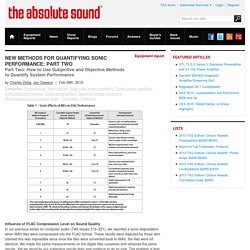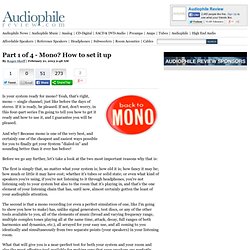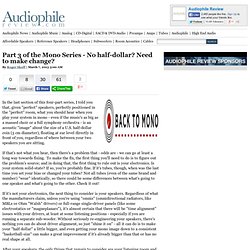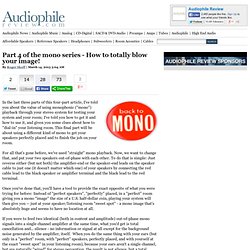

New Methods for Quantifying Sonic Performance: Part Two. Influence of FLAC Compression Level on Sound Quality In our previous series on computer audio (TAS Issues 218–221), we reported a sonic degradation when WAV files were compressed into the FLAC format.

These results were disputed by those who claimed this was impossible since once the files were converted back to WAV, the files were bit identical. We made the same measurements on the digital files ourselves and obtained the same results. Yet we stood by our subjective results then and continue to do so now. The problem is that measuring digital files themselves has no bearing on the ambient jitter coming from a variety of sources generated within a computer, and it does not reveal audible sonic differences. Only when the digital information is transformed to analog by the DAC do these sonic differences become manifest. (new adventures in) ultra‑fi. Retro vintage modern hi-fi. Retro vintage modern hi-fi. 23 ways to frame your record album covers.
Part 1 of 4 - Mono? How to set it up - Audiophile Review. Is your system ready for mono?

Yeah, that's right, mono -- single channel; just like before the days of stereo. If it is ready, be pleased. If not, don't worry, in this four-part series I'm going to tell you how to get it ready and how to use it, and I guarantee you will be pleased. And why? Because mono is one of the very best, and certainly one of the cheapest and easiest ways possible for you to finally get your System "dialed-in" and sounding better than it ever has before! Part 2 of A Four-Part Series on Mono - Got half-a-dollar? Want one? - Audiophile Review. In the first part of this four-part series, I described how playing mono (also called "monophonic" or "monaural") through your stereo system can provide you with tools and tests to help "dial in" your system and make it sound better than ever before.

I also told you how your system can be set up for mono playback. In this part, I'm going to tell you about one of those tests and how and why it works. Part 3 of the Mono Series - No half-dollar? Need to make change? - Audiophile Review. In the last section of this four-part series, I told you that, given "perfect" speakers, perfectly positioned in the "perfect" room, what you should hear when you play your system in mono - even if the music's as big as a massed choir or a full symphony orchestra - is an acoustic "image" about the size of a U.S. half-dollar coin (3 cm diameter), floating at ear level directly in front of you, regardless of where between your two speakers you are sitting.

If that's not what you hear, then there's a problem that - odds are - we can go at least a long way towards fixing. To make the fix, the first thing you'll need to do is to figure out the problem's source; and in doing that, the first thing to rule out is your electronics. Is your system solid-state? If so, you're probably fine. Part 4 of the mono series - How to totally blow your image! - Audiophile Review.
In the last three parts of this four-part article, I've told you about the value of using monophonic ("mono") playback through your stereo system for testing your system and your room; I've told you how to get it and how to use it, and given you some clues about how to "dial-in" your listening room.

This final part will be about using a different kind of mono to get your speakers perfectly placed and to finish the job on your room. For all that's gone before, we've used "straight" mono playback. Now, we want to change that, and put your two speakers out-of-phase with each other. Charles Limb: Building the musical muscle. Barry Blesser: Aural Architecture. Gnod - The global network of dreams. Online Audio Converter (MP3, WAV, Ogg, WMA, M4A, AAC) – media.io.
Digital. Speakers. Tube Gear. Tubes. Turntables. Headphones. Video. Stereo. DIY & Kits. Personal Systems. Stores. Audiophile sites.